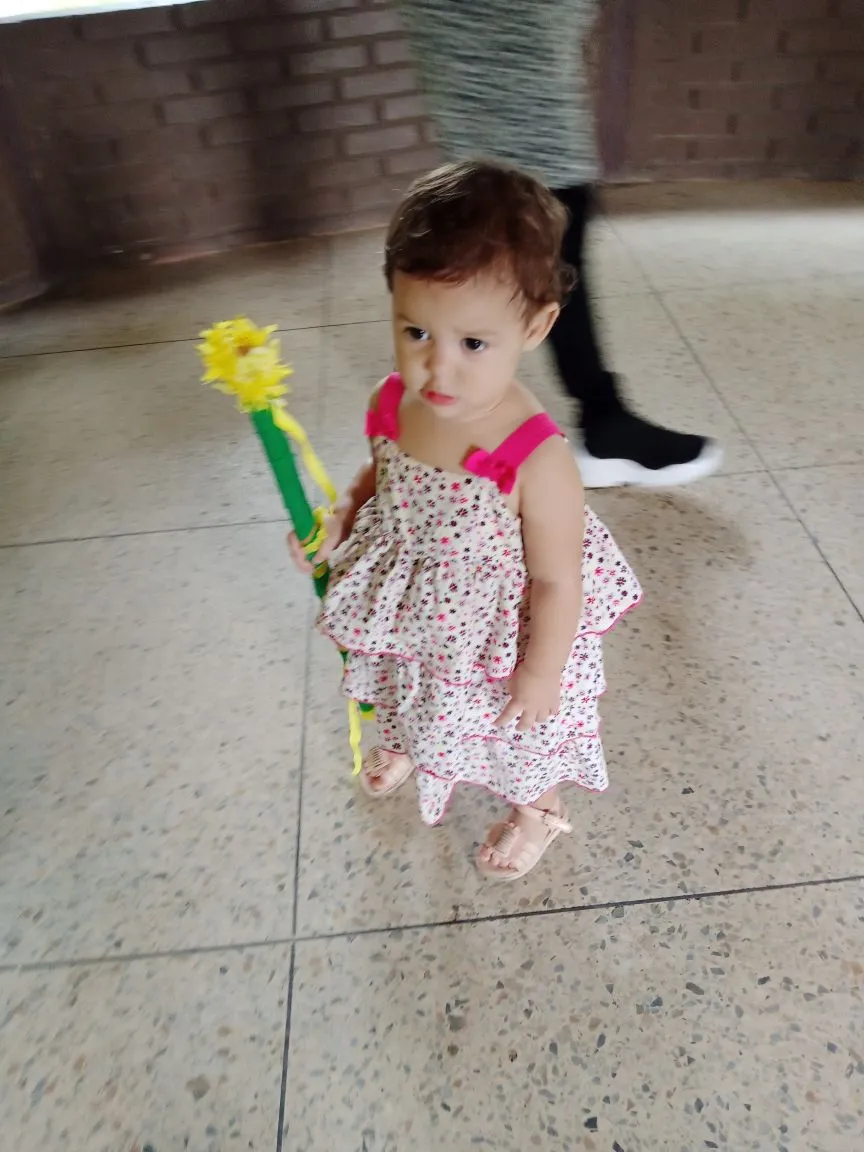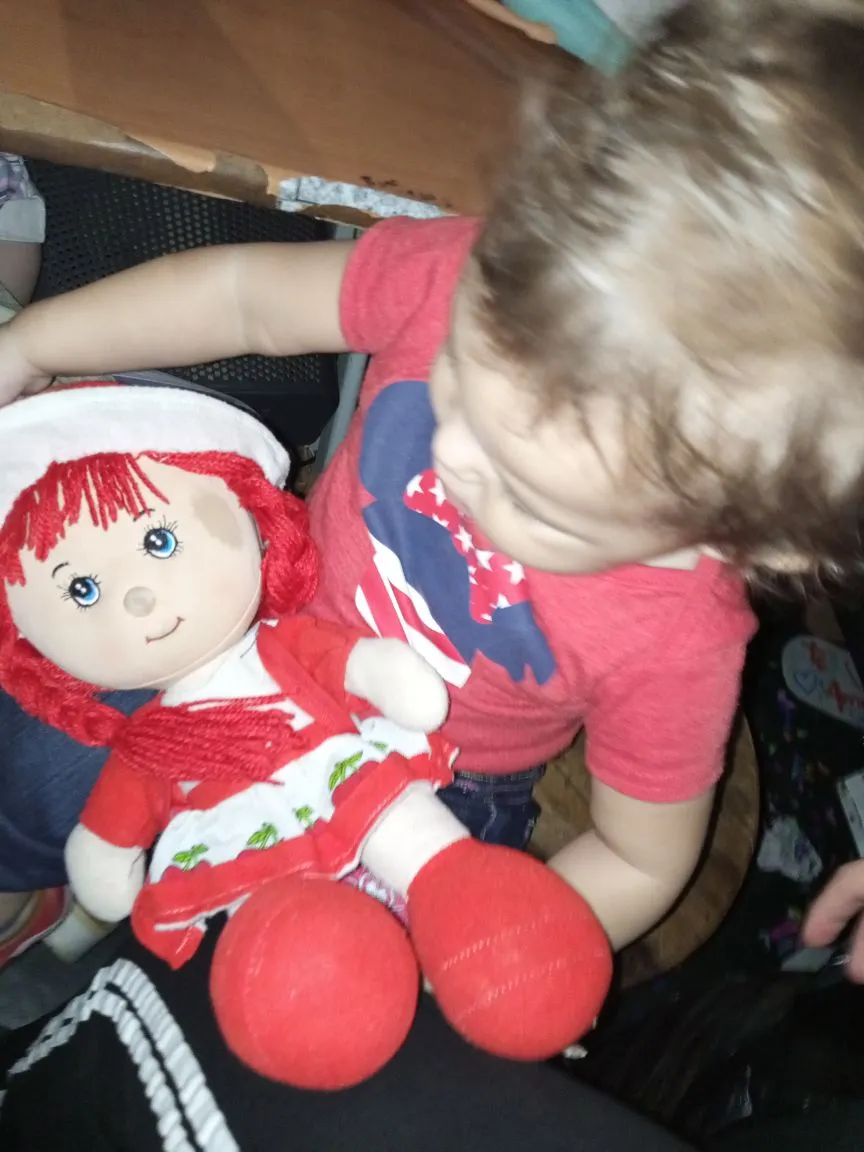

La participación del día de hoy me encanta, gracias a la comunidad por nuestro maravilloso #MomLife, me corresponde responder la pregunta #2 de la semana 33, justamente Alissandra tiene 14 meses y está aprendiendo a hablar, dice pocas palabras más bien diría sílabas, pero entiende todo perfectamente, yo paso el día diciendo todo por su nombre para que ella se acostumbre a los nombres de las cosas y también para que aprenda a reconocer los colores, es una niña como todos los de esta generación muy inteligente, muy chispa, ella sabe cuál es el televisor y el control pero no lo llama por su nombre, aunque lo reconoce perfectamente al igual que el control del aire, cada cosa, ella sabe que es una galleta ,si están pasando Peppa Pig o Súper Monstruos pero tengo algunos tips que aprendí con mi hermana para saber cómo enseñarle.
I love today's participation, thanks to the community for our wonderful #MomLife, it is my turn to answer question #2 of week 33, Alissandra is 14 months old and is learning to speak, she says few words I would rather say syllables, but she understands everything perfectly, I spend the day saying everything by name so she gets used to the names of things and also so she learns to recognize colors, she is a child like all of this generation, very intelligent, very spark, she knows which is the TV and the control but she does not call it by its name, although she recognizes it perfectly as well as the air control, everything, she knows what a cookie is, if Peppa Pig or Super Monsters are on but I have some tips that I learned with my sister to know how to teach her.

Una buena manera de estimular el desarrollo lingüístico para comunicarse de manera verbal es hablarles despacio, de esta manera ellos prestarán atención y al estar atentos los verás abriendo la boca o queriendo imitar lo que haces porque al verte los labios ,querrán repetir.
A good way to stimulate linguistic development to communicate verbally is to talk slowly, this way they will pay attention and when they are attentive you will see them opening their mouths or wanting to imitate what you do because when they see your lips, they will want to repeat.

Escucharlos con atención para ver qué sílabas pronuncia y así jugar con ellos para que aprendan mucho más rápido. Hacer contacto visual, porque así sabrás que está prestando atención a tus llamados, no te afanes a las palabras en específico, puede ser un color, una planta, un animal, algún sobre nombre.
Listen to them carefully to see what syllables they pronounce and play with them so they learn much faster. Make eye contact, because this way you will know that they are paying attention to your calls, do not worry about specific words, it can be a color, a plant, an animal, or a name.
Cantarle, oír canciones y repetírsela le motiva por qué ellos entre 1 años y medio y 5 años repiten todo, y está es otra gran manera de hacer que aprendan a pronunciar las palabras y a expresarse, las canciones de niños enseñan de colores, números, animales, frases, también hacerle juegos como los de memoria, juegos de nombre como el juego de "adivina como se llama" que consiste en adivinar cómo se llama algún objeto porque mamá y papá no lo recuerdan.
Singing, listening to songs and repeating it to them motivates them because they between 1 and a half and 5 years old repeat everything, and this is another great way to make them learn to pronounce words and express themselves, children's songs teach colors, numbers, animals, phrases, also make games like memory games, name games like the game "guess what it is called" which consists of guessing what some object is called because mom and dad do not remember it.
Puede ser un poco tedioso para los padres que siempre están ocupados pero dedicarle por lo menos una hora a los bebés para mostrarle las cosas que la casa y decirle el nombre y el color de cada una de esta manera de incentivar a pronunciar los nombre.
It can be a bit tedious for busy parents, but dedicating at least an hour to show babies the things in the house and telling them the name and color of each one is a way to encourage them to pronounce the names.

Me encanta enseñarle cada color y cada nombre aunque no quiere hablar solo cuando está muy apurada me dice MA MÁ, No, Si, cuando voy a salir, cuando estoy lista, cuando quiere que la cargue de resto yo le digo busca a la bebé y ella la busca, dónde está el unicornio y lo busca, dale un abrazo y lo abraza, dónde están mis zapatos y también quiere buscarlos, vamos a dormir y se va a la cama, tenemos muy buena comunicación solo que no es verbal recíproca pero nos entendemos, espero mis consejos te sirvan con bebés que tenga más meses.
I love to teach her every color and every name although she doesn't want to talk only when she is in a hurry she tells me MA MÁ, No, Si, when I'm going out, when I'm ready, when she wants me to hold her, when she wants me to hold her I tell her look for the baby and she looks for her, where is the unicorn and she looks for it, give her a hug and she hugs it, where are my shoes and she also wants to look for them, we go to sleep and she goes to bed, we have very good communication but it is not verbal but we understand each other, I hope my tips will help you with babies that are older than a few months.





Recursos Utilizados | Resources Used
La imagen del banner fue editada con la aplicación Photoshop CS6| The image of the banner was edited with the Photoshop CS6 application
Las imágenes del divisor y semanario de preguntas, fueron tomadas de la comunidad Motherhood | The images of the divider and weekly questionnaire were taken from the Motherhood
Traducido con www.DeepL.com | Translated with www.DeepL.com/Translator





